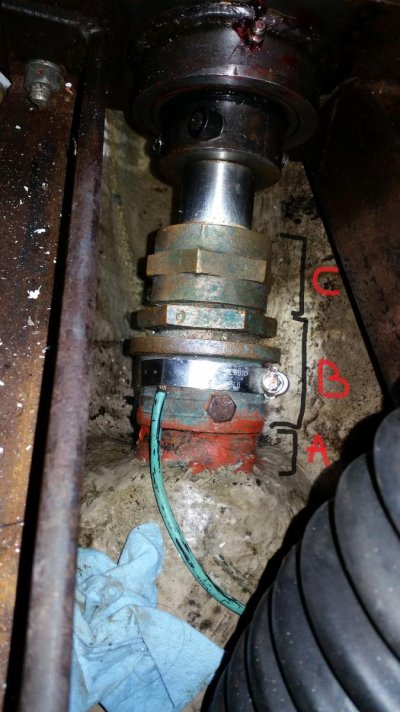Lou_tribal
Guru
Hi TFers,
Again another day, another pain.
This morning when checking the shaft seal I found out something odd.
As I am not used to these seal I request your knowledge and help here.
Here is a picture of my seal:

It is a packing gland as seen on picture. My issue is that the part that goes on the hull (the one with the grounding wire on it) is loose. I mean I can turn it with one hand, not totally loose but moveable. I don't think this is normal ???
If I put my hand under and touch with my fingers I can feel that some (few but some) water can pass there and again I think this is not normal as if I am right the water drops should only goes along the shaft through the packing nut.
May yu please advise if there is any danger there, should I haul out? I start to be a bit desperate, looks like this year I am not due for vacation
Thank you in advance.
L.
Again another day, another pain.
This morning when checking the shaft seal I found out something odd.
As I am not used to these seal I request your knowledge and help here.
Here is a picture of my seal:

It is a packing gland as seen on picture. My issue is that the part that goes on the hull (the one with the grounding wire on it) is loose. I mean I can turn it with one hand, not totally loose but moveable. I don't think this is normal ???
If I put my hand under and touch with my fingers I can feel that some (few but some) water can pass there and again I think this is not normal as if I am right the water drops should only goes along the shaft through the packing nut.
May yu please advise if there is any danger there, should I haul out? I start to be a bit desperate, looks like this year I am not due for vacation

Thank you in advance.
L.



